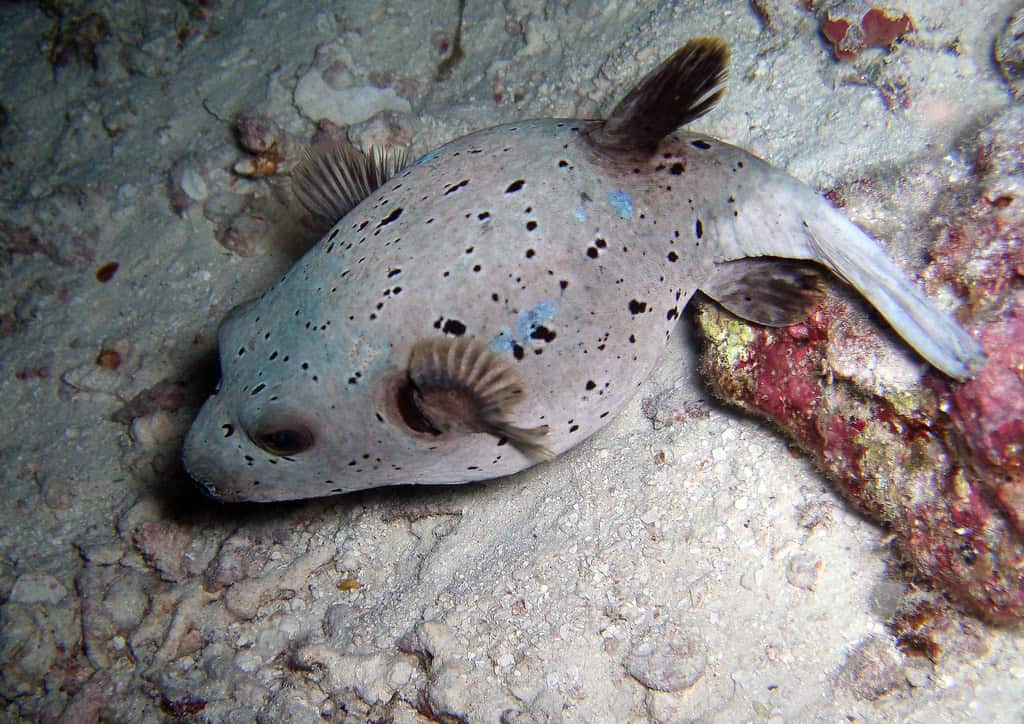In the azure waters surrounding Japan, a mesmerizing phenomenon occurs that exemplifies nature’s artistic prowess. Male pufferfish, specifically the species Torquigener albomaculosus, create elaborate geometric patterns on the seafloor—intricate designs that rival human art in their precision and beauty. These underwater masterpieces, spanning up to 7 feet in diameter, serve a critical evolutionary purpose: attracting a mate. First documented scientifically in 2012, these structures have captivated marine biologists and art enthusiasts alike, earning the tiny fish (rarely exceeding 5 inches in length) the title of nature’s underwater artists.
What makes this behavior particularly remarkable is the disparity between the artist’s size and their creation. Imagine a human crafting a precise geometric pattern the size of a football field using only their body. The dedication of the male pufferfish is equally impressive—they work tirelessly for 7-9 days, using nothing but their fins and body to construct these sand mandalas. This article explores the fascinating world of pufferfish sand art, examining the construction process, evolutionary significance, and the remarkable biology that enables these diminutive fish to create such stunning structures.
The Discovery of Pufferfish Sand Circles

The mystery of underwater sand circles off the coast of Japan puzzled divers and marine scientists for decades. These perfectly formed geometric patterns would appear on the seafloor, leading to speculation about their origins—some even attributed them to extraterrestrial activity or underwater currents. It wasn’t until 2012 that underwater photographer and diver Yoji Ookata, along with a team from Japan’s national broadcasting organization NHK, solved the mystery. Through careful underwater observation and filming, they documented a small male pufferfish meticulously crafting these circular structures grain by grain.
This breakthrough discovery was published in the journal Scientific Reports by researchers Hiroshi Kawase, Yoji Okata, and Kimiaki Ito, bringing worldwide attention to this previously unknown behavior. The scientific community was astonished not only by the artistic abilities of the pufferfish but also by how this behavior had remained undocumented for so long despite occurring in relatively accessible waters. The discovery highlighted how much remains unknown about marine life, even in well-studied areas, and sparked renewed interest in the cognitive capabilities of fish species previously considered relatively simple.
Identifying the Artist: Torquigener albomaculosus

The creator of these underwater masterpieces, Torquigener albomaculosus, is a species of pufferfish belonging to the Tetraodontidae family. This particular species wasn’t even formally described and named until 2014, two years after their artistic behavior was documented. The species name “albomaculosus” refers to the white spots that adorn its grayish-brown body. Endemic to the waters around Japan, particularly near Amami-Oshima Island in the southern part of the country, these fish typically inhabit sandy bottoms at depths ranging from 10 to 30 meters.
What makes this identification particularly interesting is that T. albomaculosus is relatively small compared to many pufferfish species, typically growing to only 12 centimeters (5 inches) in length. The males, who are the exclusive creators of the sand circles, are even smaller than the females they aim to attract. This sexual dimorphism—where females are larger than males—is significant in understanding the evolutionary pressure that may have led to the development of such elaborate mating displays. Unable to compete physically with larger males of other species for territory or through direct displays of size, these pufferfish evolved an alternative strategy: demonstrating fitness through artistic skill and dedication.
The Construction Process: A Labor of Love

The creation of a pufferfish sand circle is nothing short of a marvel of natural engineering. The male begins the process by selecting an appropriate location with the right sand composition—not too fine and not too coarse. Using his body and fins as tools, he starts at the center and works outward in a spiral pattern, continuously swimming back and forth to move individual sand grains into position. The fish uses his pectoral fins to create the radiating ridges that form the basic structure of the circle, swimming in tight patterns and sometimes even using his body to flatten certain areas while creating raised ridges in others.
This painstaking process continues for approximately one week, with the male working nearly continuously, taking only brief breaks to feed. As the circle takes shape, the pufferfish adds increasingly fine details, including decorative patterns along the ridges and valleys. Perhaps most remarkably, the fish carefully selects and places tiny seashell fragments, colorful stones, and pieces of coral in specific locations throughout the design, creating contrast and visual appeal. These decorations aren’t randomly placed but strategically positioned to catch light and create shadows, enhancing the overall visual impact of the structure when viewed from above—precisely the perspective from which a female would first encounter it.
Architectural Features of the Sand Circles
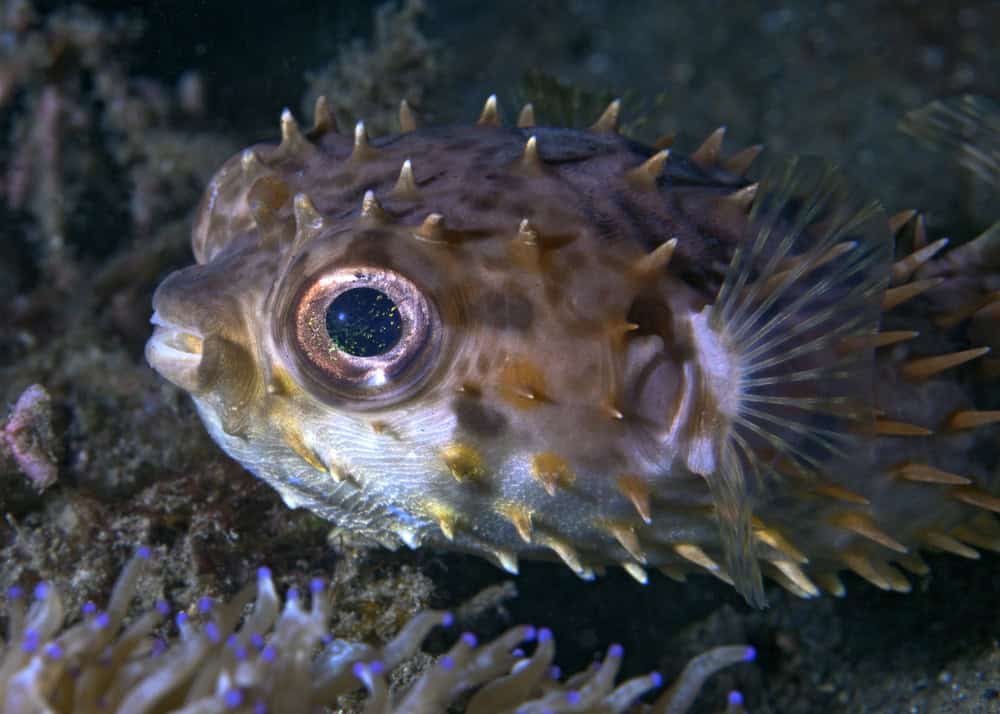
The architecture of pufferfish sand circles follows a surprisingly consistent pattern across different individuals, suggesting this behavior is largely instinctive rather than learned. The typical structure consists of a central circle surrounded by radially symmetrical ridges and valleys that create a geometric pattern reminiscent of a mandala. The outer diameter typically measures between 1.5 and 2 meters (5-7 feet), making it approximately 20 times larger than the fish itself. The central zone has a more flattened appearance, while the outer regions display more pronounced ridges that can reach heights of 3-5 centimeters (1-2 inches).
What’s particularly fascinating from an engineering perspective is how the male incorporates features that serve multiple functions. The radiating ridges not only create a visually striking pattern but also function to channel water currents in specific ways. When underwater currents pass over the structure, the design creates distinct flow patterns that help distribute the male’s pheromones, potentially increasing the distance at which females can detect the nest. Additionally, the raised and lowered portions create variable light patterns on the sandy bottom, enhancing visibility of the structure even in murky water conditions. Scientists have also noted that fine sand particles are concentrated in the center of the circle where eggs will eventually be laid, providing an optimal substrate for egg development.
The Purpose: Female Attraction and Selection
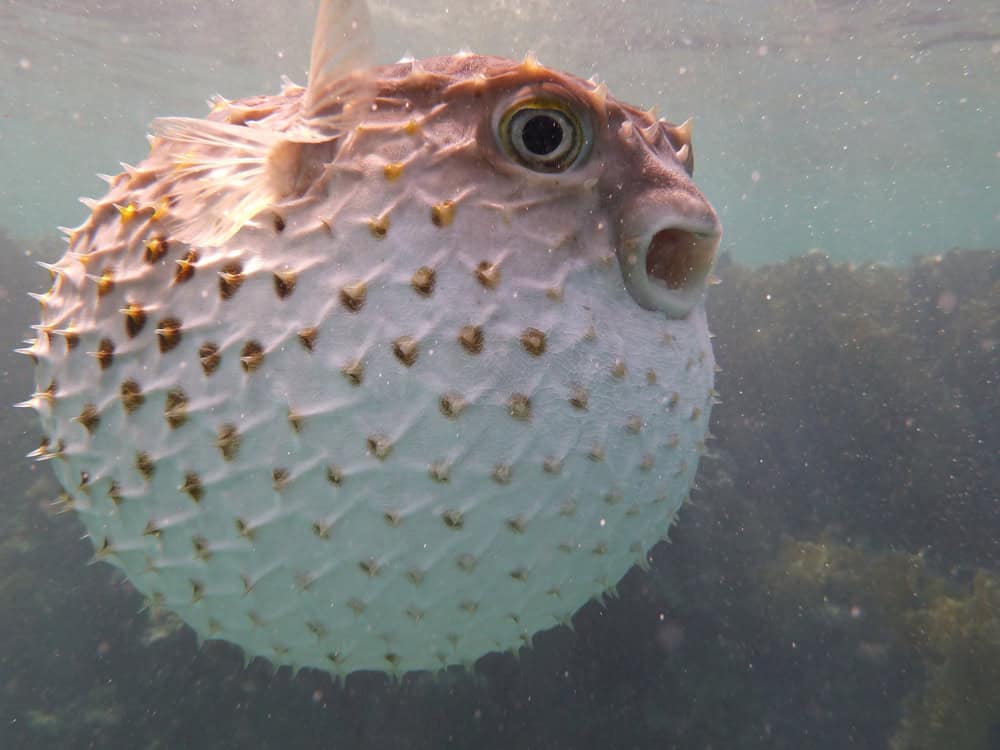
The primary purpose of these elaborate sand structures is sexual selection. Female pufferfish swim the waters above the seafloor, searching for signs of these circular patterns. When a female encounters a circle, she doesn’t immediately commit to mating. Instead, she engages in a careful inspection process, swimming over and around the circle multiple times, seemingly evaluating its quality. Research indicates that females show preference for circles with more precise geometric patterns, finer detailing, and better-placed decorative elements—suggesting they use the quality of construction as a proxy for evaluating the genetic fitness of the male.
This selection process represents a classic example of what evolutionary biologists call “costly signaling.” By investing significant time and energy in creating an elaborate structure, the male demonstrates his health, vigor, and genetic quality to potential mates. Males with parasites, poor nutrition, or inferior genes likely couldn’t complete such a demanding task with the same level of precision. From the female’s perspective, choosing a male who creates a superior sand circle increases the likelihood that her offspring will inherit advantageous genes. This explains why males spend nearly a week on construction—the investment, though enormous, potentially pays off in reproductive success that would otherwise be unattainable for these small fish.
The Mating Ritual and Egg Deposition

After a female selects a sand circle that meets her standards, a fascinating mating ritual begins. She swims into the center of the circle where the male performs a dance-like swimming pattern around her. This courtship behavior involves rapid darting movements, fin displays, and specific swimming formations that further demonstrate the male’s fitness. If the female remains receptive after this display, she will deposit her eggs in the fine sand at the center of the circle. Unlike many fish species where males release sperm over externally laid eggs, pufferfish engage in a more directed fertilization process, with the male releasing milt (sperm-containing fluid) directly over the eggs as they’re being laid.
What happens next reveals another remarkable aspect of this reproductive strategy. After fertilization, the female departs, leaving the male to guard the nest. The male remains vigilant over the eggs, which typically number between 2,000-3,000, continuing to maintain the sand circle structure which now serves as a protective nest. He removes debris, repairs damage from currents or other fish, and actively chases away potential predators. This paternal care continues for approximately six days until the eggs hatch. The newly hatched larvae then drift into the water column as plankton, beginning their life cycle. Interestingly, once the eggs hatch, the male abandons the circle, which gradually deteriorates with ocean currents, meaning he must create an entirely new structure for his next mating opportunity.
Biological Adaptations for Sand Manipulation
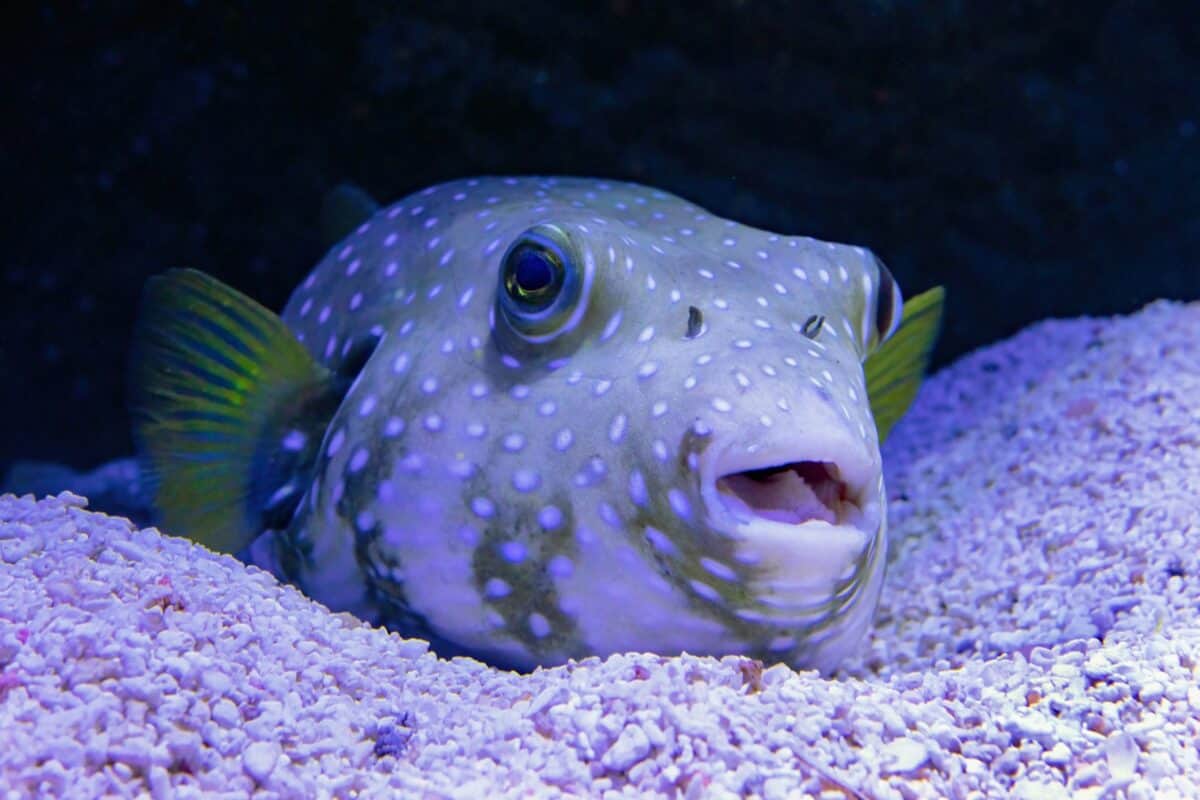
The ability of pufferfish to create such precise sand formations isn’t merely a behavioral adaptation but relies on specific physical characteristics. Close examination of Torquigener albomaculosus reveals several adaptations that facilitate sand manipulation. Their pectoral fins have evolved a higher degree of dexterity and fine motor control compared to related species, allowing for precise movement of individual sand grains. The fins contain a dense network of nerve endings that provide enhanced tactile sensitivity, enabling the fish to assess the texture, weight, and position of materials they’re manipulating.
Additionally, the pufferfish’s mouth structure plays a crucial role in their sand artistry. While many fish species have mouths adapted primarily for feeding, the white-spotted pufferfish has a slightly protrusible mouth that can function similar to a precision tool, capable of picking up and depositing individual shell fragments and stones. Their excellent vision, particularly their ability to perceive fine details and contrast differences, allows them to evaluate their work as it progresses. These biological adaptations, combined with the cognitive ability to maintain a mental “blueprint” of the desired pattern, make these fish uniquely equipped for their architectural endeavors—a fascinating example of how evolution can produce specialized adaptations for reproductive behaviors.
Cognitive Implications: Fish Intelligence

The creation of sand circles by pufferfish has forced scientists to reconsider assumptions about fish cognition and intelligence. The complexity and precision of these structures suggest cognitive abilities previously underestimated in fish. Creating geometrically symmetrical patterns requires spatial awareness and the ability to maintain a mental representation of the overall design while working on individual sections. The fish must also make continuous adjustments based on changing conditions such as currents or sand availability, demonstrating problem-solving capabilities. While researchers debate whether the behavior is entirely instinctive or includes learned components, the consistent quality and individual variation in designs suggest at least some element of learning and improvement over time.
Neurobiological studies of pufferfish brains reveal a relatively well-developed cerebellum and telencephalon—regions associated with motor control and higher cognitive functions in vertebrates. While their brain structure differs significantly from mammals, the pufferfish’s ability to create complex structures challenges the notion that brain size alone determines cognitive potential. This discovery joins other examples of surprising fish intelligence, such as tool use in wrasses and cooperation in groupers, contributing to a growing scientific recognition that fish cognition is far more sophisticated than previously believed. The implications extend beyond fish biology, suggesting that intelligence and complex behaviors have evolved independently in different animal lineages under similar selective pressures.
Environmental Influences on Sand Circle Construction

The creation of pufferfish sand circles doesn’t occur in a vacuum but is heavily influenced by environmental factors. Research shows that circle construction is most prevalent during specific seasons, typically peaking in late spring through early summer when water temperatures range between 18-24°C (64-75°F). These seasonal patterns align with optimal conditions for egg development and larval survival. Water current strength also plays a critical role in site selection, with males preferring areas with moderate, predictable currents. Too strong, and the structure would be constantly damaged; too weak, and the pheromone-dispersing function of the ridges would be compromised.
Substrate composition represents another crucial environmental factor. Males show a marked preference for specific sand grain sizes, typically selecting medium-fine sand that can be effectively manipulated but remains stable enough to hold shape. They avoid areas with too much silt or organic matter which could cloud the water and reduce visibility of their creation. Scientists have also observed that proximity to certain reef structures or seagrass beds influences site selection, likely because these provide refuge for the male during brief breaks from construction and may offer protection for hatching larvae. These environmental sensitivities make pufferfish sand circles potentially valuable bioindicators—changes in their frequency or quality may signal shifts in marine ecosystem health before other indicators become apparent.
Threats and Conservation Implications
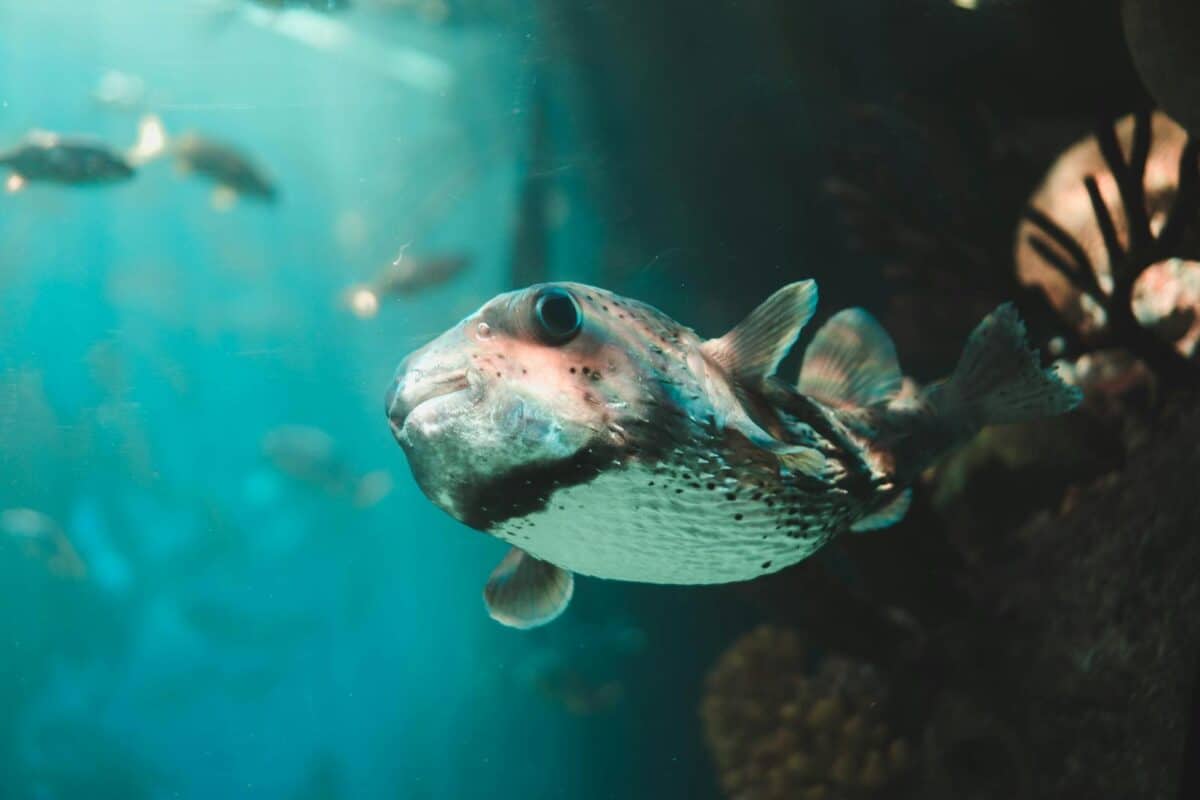
Despite their remarkable nature, pufferfish sand circles face numerous threats in today’s changing marine environment. Coastal development and resulting sedimentation can alter the sand composition and water clarity essential for both circle construction and female evaluation. Ocean acidification poses another threat, potentially affecting the availability and integrity of the shell fragments used as decorative elements. As filter feeders that consume small invertebrates, pufferfish populations may also be impacted by declining prey populations due to broader ecosystem changes and overfishing of larger predatory species that maintain ecological balance.
Human activities directly threaten these underwater artworks as well. Increased boat traffic and anchoring in shallow waters can physically destroy the circles, while underwater tourism, if not properly managed, risks disrupting the shy males during construction. Some areas in Japan have implemented protected zones during peak breeding seasons, limiting diving and boating activities to preserve this unique behavior. Conservation efforts are hampered by limited public awareness, as many people remain unaware of this fascinating behavior. Expanded marine protected areas and research programs dedicated to monitoring pufferfish populations could help ensure these remarkable underwater artists continue their creative work for generations to come, providing not just a spectacle of natural beauty but valuable insights into the complexity of marine life.
Conclusion: Nature’s Underwater Artists

The sand art created by male pufferfish stands as one of nature’s most remarkable examples of animal architecture, rivaling the precision of spider webs and the complexity of bird nests. These intricate circular structures represent far more than beautiful patterns—they embody the power of sexual selection as an evolutionary force capable of driving the development of behaviors that appear almost artistic in their execution. Through their painstaking work, these small fish demonstrate that impressive cognitive abilities and precise physical control can evolve in unexpected places within the animal kingdom, challenging our assumptions about fish intelligence and behavior.
The discovery of pufferfish sand circles relatively recently—in scientific terms—reminds us that the oceans still hold countless mysteries awaiting discovery. Even in well-studied coastal waters, behaviors of remarkable complexity and beauty may have escaped scientific documentation. For conservationists, these underwater artworks provide a compelling symbol of marine biodiversity worth protecting—if creatures as small as pufferfish can create such complexity, what other wonders might we lose before discovering them? As we continue to study these remarkable fish and their creative processes, they offer not only insights into animal behavior and evolution but also inspiration for human art, design, and engineering, proving once again that nature remains our most ingenious and surprising teacher.
- Eagles vs. Snakes: Who Would Win? - August 9, 2025
- Why Pandas Were Once Nearly Extinct—and How China Saved Them - August 9, 2025
- This Fish Has the Most Teeth in the Ocean—And Uses Them Well - August 9, 2025

